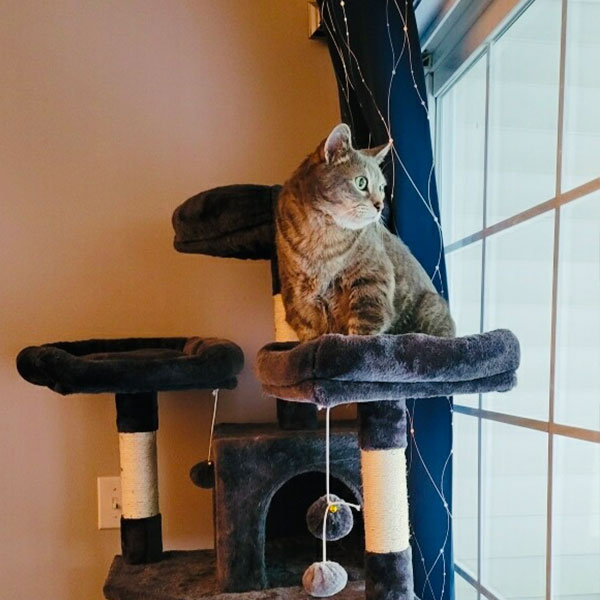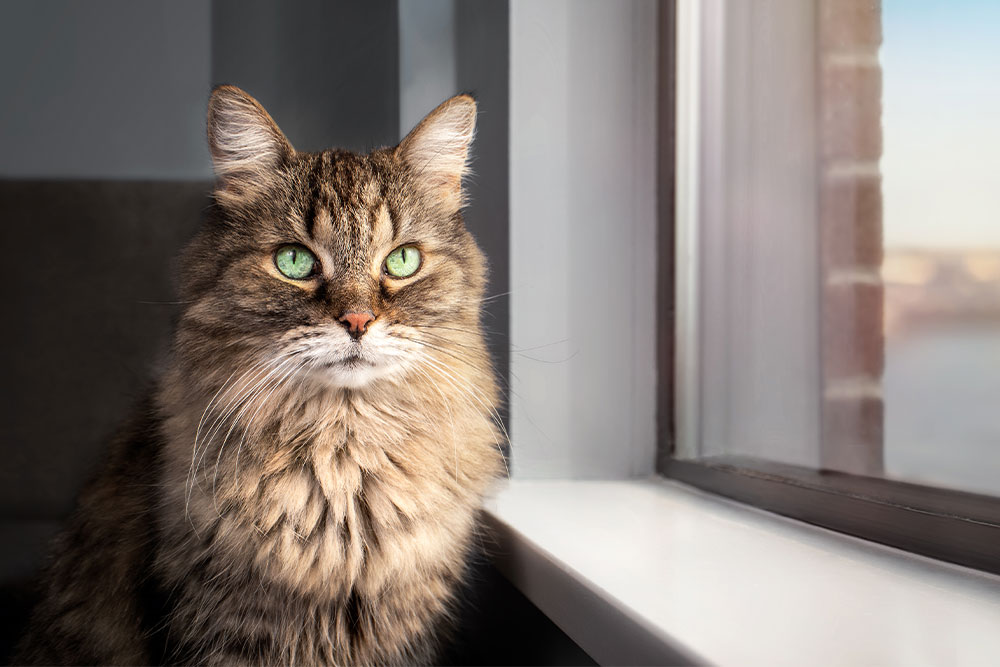Young kittens and cats are usually a constant source of amusement for their owners. They often have total disregard for boundaries. They jump and climb on everything in sight. Some experiment with their flight skills by leaping from one cabinet or piece of furniture to another, covering the entire domicile without ever touching the floor. They get the zoomies when they’re particularly amused with themselves, and their energy between naps is a delightful show.
Then, about the time they turn 10 years old, sometimes even earlier, their behavior can start to change. They might still find a pet mouse or a ball of yarn great fun, but their interest doesn’t last as long. They don’t get the zoomies very often, and they no longer think the tops of kitchen cabinets are mountains needing to be conquered.
Leaping, jumping – even with soft landings – and climbing are no longer favorite activities. They seem to be stiff when they get up from a nap. “Cats are known for hiding their pain, so their owners may not realize age is not the only reason their cats are slowing down and changing,” said Dr. Ellen Reinke. “Many elderly cats have osteoarthritis: a degenerative, progressive disease that causes a lot of pain.”

Before his osteoarthritis treatment, pain caused Shadow to curtail his movements. The extent of his physical activity was modeling new scarves.

Shadow’s pain from arthritis made it difficult for him to enjoy his playground, but Solensia treatments have helped him regain mobility. He can now enjoy his cat tree again.
Besides noting their cats have slowed down, owners may see other changes in their feline friends. “Their overall demeanor may change. They may suddenly have no-petting zones. Their appetites may wane, and they may lose weight,” said Reinke. “They may show signs of depression, get a little aggressive, seclude themselves or lose interest in proper grooming. Some even urinate or defecate outside the litter box.”
Shadow is a 16-year-old cat whose owner noticed he stopped jumping to his favorite places and actually avoided even small jumps altogether. He didn’t avail himself of all the levels of his climbing playground. “When he stood from a reclined position, he would walk slowly with a slight arch in his back,” said his owner. “I could see how uncomfortable he was.”
Reinke examined Shadow, and she and the owner concluded Shadow’s pain was from osteoarthritis. “After all, he’s approaching 80 in human years, and arthritis is often an ordinary condition in the aging – whether feline or human,” said the owner.
After two Solensia treatments, Shadow has resumed his regular zoomie schedule.
Reinke explained that the owner sharing her home observations during Shadow’s examination was key to getting a proper diagnosis. “Most of the symptoms of an arthritic pet will not be easy for a veterinarian to see during a visit to the clinic,” she said. “Once we had a diagnosis for Shadow, though, we also had good news. There is now an osteoarthritis treatment available for cats, and results from a three-month study showed improvement in 77 percent of cats,” said Reinke.
“Solensia is a once-a-month injectable antibody that blocks the nerve growth factor, which then mediates pain in cats,” said Reinke. “The treatment reaches its full effects after two injections, and because it’s not a true drug, there are very low risks of side effects or drug interactions. Cats might feel discomfort or pain at the site of the injection, and some might react with some vomiting, but those are short-term side effects and worth the ultimate outcome.”
Shadow would agree. After having his two injections, he felt good enough to hunt and slay toy mice. He is playing soccer again, and he has resumed enjoying his playground. “He’s back to having zoomies, too,” said the owner, “and watching those is something that never gets old.”
For more information, visit https://greendalevillagevet.com/ or call 414-421-1800.







Leave A Comment